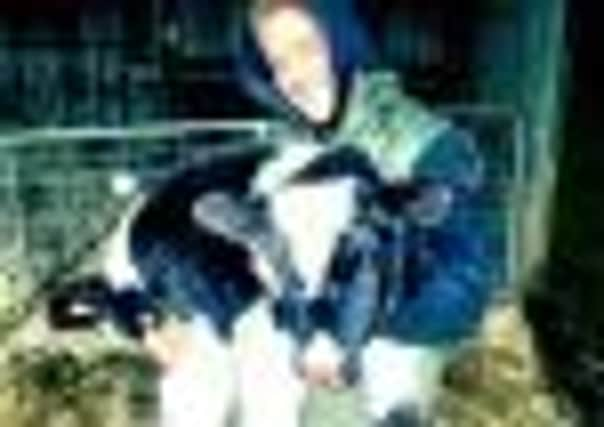Taste of farm life at end of the world


A lifelong curiosity for adventure, exploration and travel, coupled with having been a recent spawn of the British university system; with the option of sparse employment opportunity or struggling to get by on a measly hourly minimum wage, led me to a dairy farm in Tasmania, the isolated seventh Australian state, the last stop before the Antarctic.
I had found myself in Australia in February due to financial difficulties while taking a trip around Indonesia the month earlier.
Advertisement
Hide AdAdvertisement
Hide AdHaving obtained a “working holiday visa”, enabling me to live and work in Australia for 12 months, I have been able to enjoy the high wages here contrary to a trend of high unemployment rates and low minimum wages.
Dairying is a well-established industry across the temperate areas of Australia where rainfall and rich soils for pasture are plentiful.
I can tell you that from June until early September it definitely rains in Tasmania. Winter 2012 was exceptionally wet.
During the dry, hot summer months, the farm where I found work relies on a complex irrigation system to maintain paddocks that supply their cows with feed during the winter.
The farm runs to 1,200 acres and has 730 milkers.
Advertisement
Hide AdAdvertisement
Hide AdJuly and August is calving season. They choose to calve at this time of year in order to run the herd at full milking capacity.
Just as other farms in the UK, the farmers use hay and silage as part of their cows’ diets.
At the height of milking, from the end of September through to the following May, they move the herd on an 18-day paddock rotation to allow for quality grass growth.
Where I worked they mainly opt for cross-bred Jersey/Holstein cows yielding a consistent fat and protein content. Interestingly, dairy cow tails are still docked as common practice in Tasmania, which is prohibited in the UK.
Advertisement
Hide AdAdvertisement
Hide AdTheir herd average is 5,250 litres per year with the leading milker being a six-year-old producing in excess of 10,000 litres.
In September 2012, when I was near to the end of my stay, 13,500 litres was collected from the farm. This rises to around 18,000 litres per day when the cows are milking at full capacity. The milk is worth around $4,000 per day in income to the farm, and their milk is collected by the multi-national dairy co-operative Fonterra.
My daily duties began at 5.30am following a 50 metre journey from my accommodation in the farmyard to the dairy. There are not too many highlights when milking cows in the cold, wet, dark mornings as I’m sure any dairy farmer will tell you.
Any novelty I may have had from milking on the other side of the world soon wore thin after the second or third steaming dump landed on my head or the stench of hot urine took my breath away.
Advertisement
Hide AdAdvertisement
Hide AdThe rotating platform’s capacity of 50 cows meant that milking 700 cows took between two and two-and-a-half hours.
A few hours into my first day on the job I found myself at the highest point on the farm tending to a cow that had a calcium deficiency around a bogged-down paddock. I proceeded to administer first aid in the form of a calcium and magnesium-based intravenous drip into the neck of the cow.
Around me I had a fantastic panorama of mountain tops, green pastures and wildlife. Unfortunately I knew that for the three hours following this I would be sat in a tractor listening to the disgusting conversation of the 25-year-old farmhand of 10 years’ dairy experience.
That experience was the single most soul-destroying of my life and also the reason why no names are mentioned here. Being alongside him would form part of my day for the first four weeks of my dairy farming career in Tasmania.
Advertisement
Hide AdAdvertisement
Hide AdIn complete contrast I have to say that the way the farming family treated me for the entirety of my stay was heartwarming. They are third-generation farmers and there were more than a few family dynamics at play within their workplace often resulting in overheated situations developing very quickly, but they looked after me well.
My day would normally end around 6pm when, during the height of calving season, it would have been pitch black by 5pm.
There were days when I would be chasing cows out of paddocks through two feet of mud and driving rain at six in the evening after a 12-hour day, and picking up any freshly born calves at 6.30am during milking.
For a non-farmer such as me, and somebody that would probably be described in these parts as a city boy, I did take offence to some of the techniques used on the farm when handling the animals. I worry this is not an isolated issue in the state. Maybe there is good reason kangaroos choose not to inhabit Tasmania.
Advertisement
Hide AdAdvertisement
Hide AdYes, there are places of outstanding natural beauty in Tasmania, but spend enough time there and the island can become a dark, depressing and lonely place. Being that far south and isolated, you could be forgiven for thinking you have reached the edge of the world.
Tasmania: A state of loneliness
The island is roughly the same in size as Ireland and yet only 500,000 people live here. Perhaps it may benefit some of them to experience something other than Tasmanian life in order to broaden their minds.
I learned a good deal about dairy farming during my time in the state, more than I ever thought I would know, and probably a lot more than I needed to.
My experience was a means to an end, and I am grateful for the employment opportunities and hospitality Tasmanians have to offer, but I will not be in a rush to put my gum boots back on.